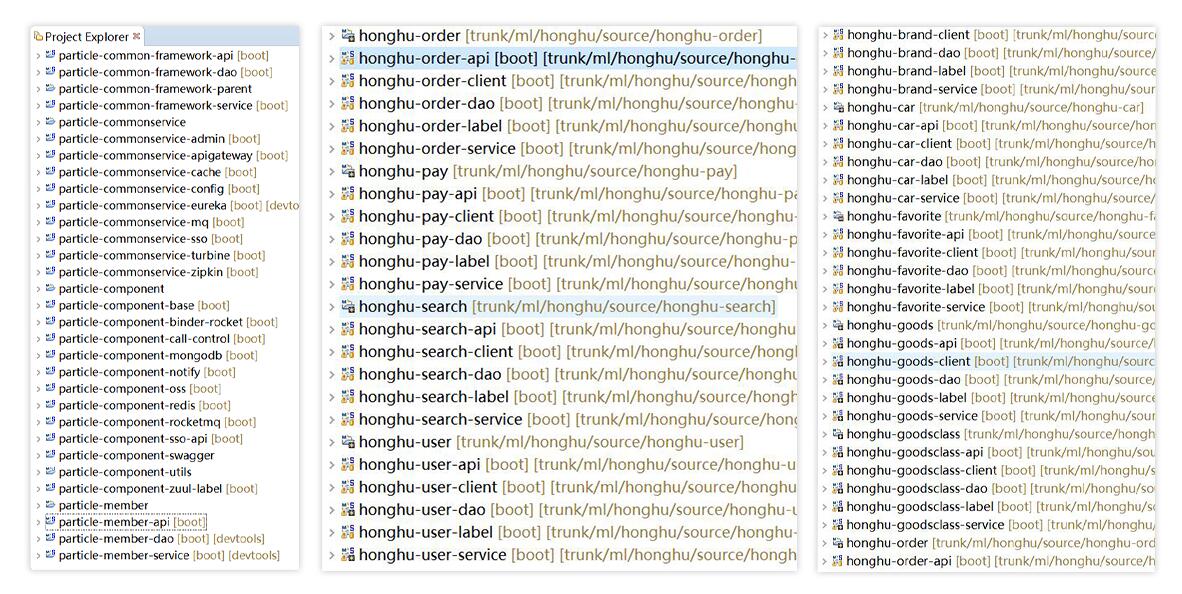
sc-sc - 云代码空间
——
Spring Cloud Bus
Spring cloud bus通过轻量消息代理连接各个分布的节点。这会用在广播状态的变化(例如配置变化)或者其他的消息指令。Spring bus的一个核心思想是通过分布式的启动器对spring boot应用进行扩展,也可以用来建立一个多个应用之间的通信频道。目前唯一实现的方式是用AMQP消息代理作为通道,同样特性的设置(有些取决于通道的设置)在更多通道的文档中。
Spring cloud bus被国内很多都翻译为消息总线,也挺形象的。大家可以将它理解为管理和传播所有分布式项目中的消息既可,其实本质是利用了MQ的广播机制在分布式的系统中传播消息,目前常用的有Kafka和RabbitMQ。利用bus的机制可以做很多的事情,其中配置中心客户端刷新就是典型的应用场景之一,我们用一张图来描述bus在配置中心使用的机制。
根据此图我们可以看出利用Spring Cloud Bus做配置更新的步骤:
1、提交代码触发post给客户端A发送bus/refresh
2、客户端A接收到请求从Server端更新配置并且发送给Spring Cloud Bus
3、Spring Cloud bus接到消息并通知给其它客户端
4、其它客户端接收到通知,请求Server端获取最新配置
5、全部客户端均获取到最新的配置
客户端spring-cloud-config-client改造
1、添加依赖
<dependency>
<groupId>org.springframework.cloud</groupId>
<artifactId>spring-cloud-starter-bus-amqp</artifactId>
</dependency>
需要多引入spring-cloud-starter-bus-amqp包,增加对消息总线的支持
## 刷新时,关闭安全验证 management.security.enabled=false ## 开启消息跟踪 spring.cloud.bus.trace.enabled=true spring.rabbitmq.host=192.168.9.89 spring.rabbitmq.port=5672 spring.rabbitmq.username=admin spring.rabbitmq.password=123456
配置文件需要增加RebbitMq的相关配置,这样客户端代码就改造完成了。
3、测试
依次启动spring-cloud-eureka、spring-cloud-config-server、spring-cloud-config-client项目,在启动spring-cloud-config-client项目的时候我们会发现启动日志会输出这样的一条记录。
2017-05-26 17:05:38.568 INFO 21924 --- [ main] o.s.b.a.e.mvc.EndpointHandlerMapping : Mapped "{[/bus/refresh],methods=[POST]}" onto public void org.springframework.cloud.bus.endpoint.RefreshBusEndpoint.refresh(java.lang.String)
说明客户端已经具备了消息总线通知的能力了,为了更好的模拟消息总线的效果,我们更改客户端spring-cloud-config-client项目的端口为8003、8004依次启动,这样测试环境就准备好了。启动后eureka后台效果图如下:
我们先分别测试一下服务端和客户端是否正确运行,访问:http://localhost:8001/neo-config/dev,返回信息:
{ "name": "neo-config", "profiles": [ "dev" ], "label": null, "version": null, "state": null, "propertySources": [
{ "name": "https://github.com/ityouknow/spring-cloud-starter/config-repo/neo-config-dev.properties", "source": { "neo.hello": "hello im dev" }
}
]
}
说明server端都正常读取到了配置信息。
依次访问:http://localhost:8002/hello、http://localhost:8003/hello、http://localhost:8004/hello,返回:hello im dev。说明客户端都已经读取到了server端的内容。
现在我们更新neo-config-dev.properties 中neo.hello的值为hello im dev update并提交到代码库中,访问:http://localhost:8002/hello 依然返回hello im dev。我们对端口为8002的客户端发送一个/bus/refresh的post请求。在win下使用下面命令来模拟webhook.
curl -X POST http://localhost:8002/bus/refresh
执行完成后,依次访问:http://localhost:8002/hello、http://localhost:8003/hello、http://localhost:8004/hello,返回:hello im dev update。说明三个客户端均已经拿到了最新配置文件的信息,这样我们就实现了图一中的示例。
改进版本
在上面的流程中,我们已经到达了利用消息总线触发一个客户端bus/refresh,而刷新所有客户端的配置的目的。但这种方式并不优雅。原因如下:
打破了微服务的职责单一性。微服务本身是业务模块,它本不应该承担配置刷新的职责。
破坏了微服务各节点的对等性。
有一定的局限性。例如,微服务在迁移时,它的网络地址常常会发生变化,此时如果想要做到自动刷新,那就不得不修改WebHook的配置。
因此我们将上面的架构模式稍微改变一下
这时Spring Cloud Bus做配置更新步骤如下:
1、提交代码触发post请求给bus/refresh
2、server端接收到请求并发送给Spring Cloud Bus
3、Spring Cloud bus接到消息并通知给其它客户端
4、其它客户端接收到通知,请求Server端获取最新配置
5、全部客户端均获取到最新的配置
这样的话我们在server端的代码做一些改动,来支持bus/refresh
整体架构如下:

完整项目的源码来源
Spring Cloud大型企业分布式微服务云架构源码请加企鹅求求:yuncode.net